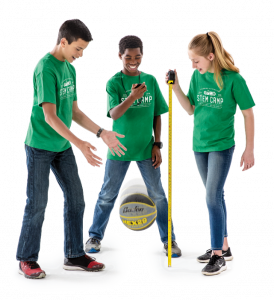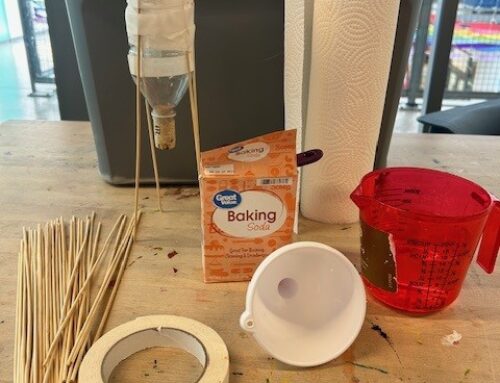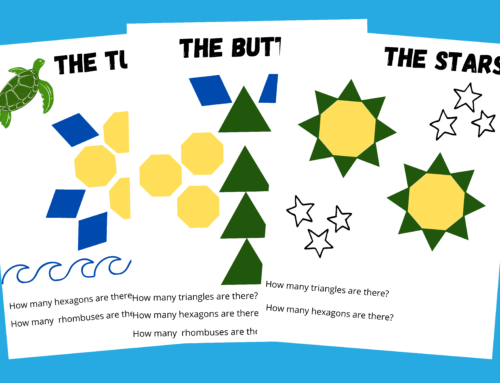With the end of the school year quickly approaching, you may be thinking towards summer. For many teachers, summer is a time to plan for the next school year. However, some teachers, as well as public librarians, museum educators, YMCA leaders, and more informal STEM educators are looking forward to running summer school, camps, or other summer programs. In a past job, I helped run a week-long summer STEM camp for middle school girls at a college. I know first hand these types of events require months of planning, from the curriculum to the snacks. In this article, I outline five important items to consider as you plan for your upcoming summer STEM program.

1. Create Three Top Goals
Every summer program is different, and your goals should align with the outcomes that you hope to achieve. By focusing on these outcomes first, it will help you determine a lot of the logistics, curriculum, and general scope of your programming. For a STEM program, you likely are hoping to engage a population of students with hands-on STEM lessons. Here are three examples of the goals I had when I ran a summer STEM camp for middle school girls.
- engage the students in real-world STEM activities
- provide young women an example of female STEM professionals as role models
- show examples of a wide range of STEM topics that students are not typically exposed to in school.
Your program also might be funded by an outside organization (e.g. a grant) or there may be some required metrics to show at the end (e.g. improved test scores). You will need to consider these items when creating your goals as well.
2. Determine the Size of Your Program
The size of your STEM summer program will depend on a lot of different factors. For example. your budget, the size of the space where activities will be held, the number of adult volunteers/staff available, and more. The summer programs that I used to run were held at a college. University students were off-campus for the summer, so I had a lot of opportunities to spread out between academic spaces. Based on our staff size, we were able to safely host 50 girls, split between two groups of 25. This meant we needed enough staffing to run two modules of STEM activities at a time.
Outline all of your constraints (budget, teaching spaces – indoor/outdoor, volunteers, time, overnight or day camp, etc.). From here, you will be able to determine how many students you can support for a STEM program.
3. Plan Your Activities
 Planning the lessons and curriculum was always my favorite part of getting ready for camp! Once you determine how many students you will have and your group sizes, you can start planning the lessons that you would like to do with the participants. For me, it was always helpful to make a shared Google doc that outlined each day. I would make a different tab for every day of camp that would have that day’s schedule outlined. This could then be shared with other volunteers and staff so that we could share responsibility in planning and ultimately, executing successful camp modules.
Planning the lessons and curriculum was always my favorite part of getting ready for camp! Once you determine how many students you will have and your group sizes, you can start planning the lessons that you would like to do with the participants. For me, it was always helpful to make a shared Google doc that outlined each day. I would make a different tab for every day of camp that would have that day’s schedule outlined. This could then be shared with other volunteers and staff so that we could share responsibility in planning and ultimately, executing successful camp modules.
In your plan, make sure to consider the lesson topic (e.g. flight), the lessons to be done for those topics (e.g. building your own parachute), who will be teaching that lesson, how much time it will take for each activity, and where that lesson will take place. Since I was doing my STEM program at a college, we were able to take the girls to the aerospace lab when teaching them about flight. Use spaces that encourage STEM thinking!
4. Order Supplies
The next part is the fun part – shopping! Once you have a detailed plan, it should be pretty clear what items you need to invest in to run an engaging STEM program. First, take inventory of what you already have on hand. If you’re a STEM teacher, you may already have some supplies and just need some refills. If you’re a public librarian running their first STEM camp, you may find you want more comprehensive kits. Every camp is different in its needs!

When considering supplies, think about how the students will be interacting in the materials. For example, if you are running a robotics camp, consider if you want one Ozobot per student, a pair of students, or a group of 4 students. The answers to these questions are determined by your goals, your plan, and your budget. Also, if you know this camp will be repeated for several years, you may want to invest in storage solutions for when the supplies are not in use.
5. Pre-Organize Your Materials by Day
Once all of your supplies come in, prepare your materials for your summer program. It is so important to pre-pack as much as you can for your lessons before the students arrive for camp. I would unbox all of my camp materials in a room and print out my Google doc of day-by-day activities. Then I would label each item for the day and module that it would be used in. If those items need to be broken down into sets, I would do that in Ziploc bags or totes. For example, if I planned to run an engineering design challenge where each group of students should be able to access the same materials like straws, I’d count everything out by group and place all those items together in a bag. This helps you to pass out materials quickly so that you can focus your time on learning.
These CreateKit Team Bins are great because you can split the supplies into color-coded bins. This helps campers build expectations. Each day they’ll know that they will be working out of a specific color bin and have access to the same tools.
If you are not sure where to start in creating a summer STEM program, you can always access our free custom product recommendation form here. We can help you determine how which equipment is appropriate for your goals, budget, and space.

Looking for a safe and effective way to teach STEM that stores itself? Look no further than My STEM Supplies! Create your own custom pack to serve your programs needs or choose from our pre-packed options. Each pack includes a backpack for easy storage and transportation.








Leave A Comment